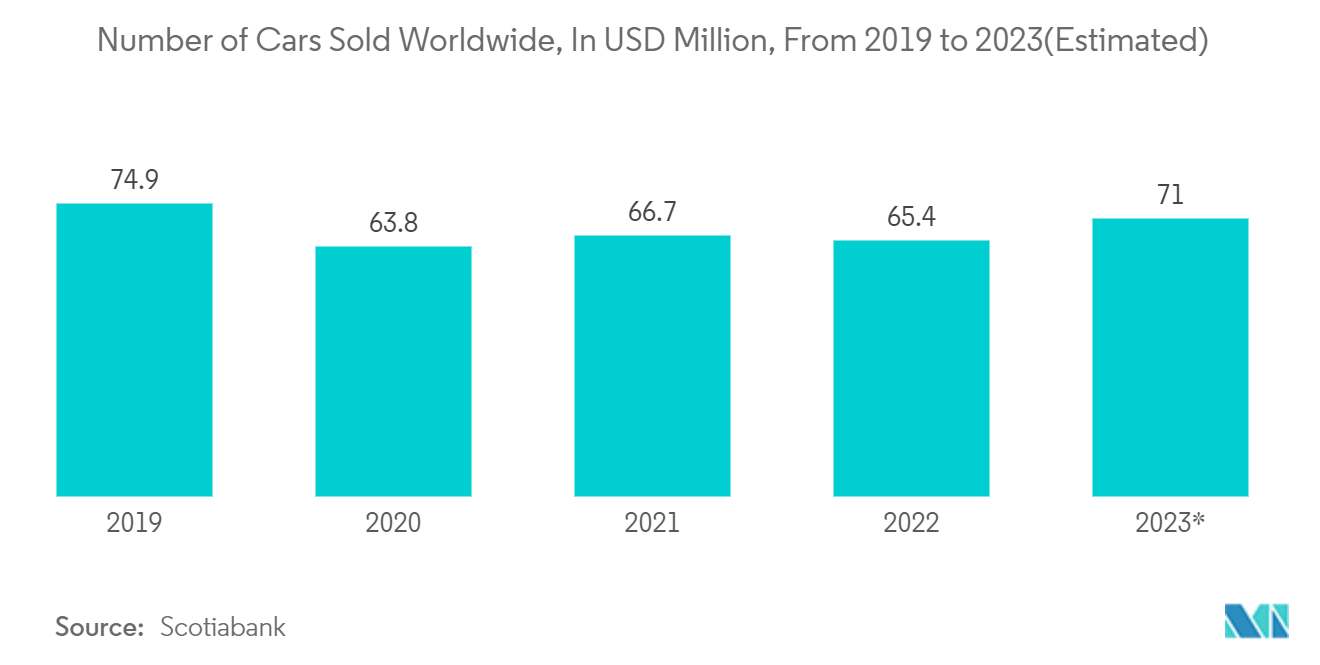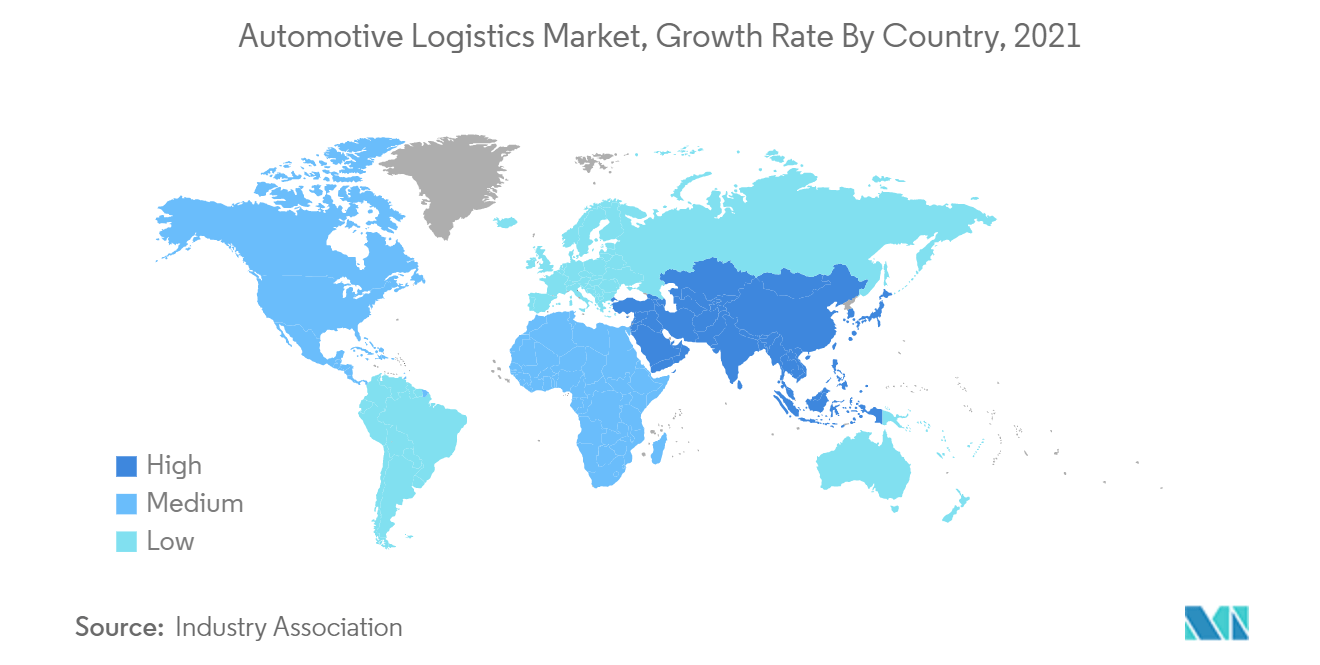Market Trends of Global Automotive Logistics Industry
Positive Outlook for the Automotive Sales and Production Demands Efficient Logistics Services
Despite some headwinds, the automotive industry looks bright globally. According to industry sources, global light vehicle production unit sales have been remarkable and continue to grow. APAC is expected to register the highest growth rate in terms of production volumes, followed by North America. Furthermore, electric vehicle production and sales are increasing at a record pace, which needs specialized logistics.
The COVID-19 pandemic and automotive semiconductor shortages have resulted in lower demand and production halts for the worldwide automobile sector since 2020. Around 11.3 million vehicles were removed from production globally in 2021 due to the chip shortage, and predictions predict that seven more vehicles will be removed from production in 2022 due to supply chain disruptions in the automotive industry. After experiencing a decline during the pandemic, global auto sales began to rebound, reaching 66.7 million units sold in 2021. It was anticipated that this sales volume would drop in 2022, and the 2023 sales volume is expected to still be below the 2019 levels.
China's economy started to slow down after years of double-digit growth. Based on sales, China had the largest vehicle market, with about 19.8 million units in 2020. However, the coronavirus outbreak in the nation and worries about an impending recession caused monthly auto sales in China to plunge in 2021. Because of effective containment measures, the market began to show indications of recovery in April, giving key manufacturers a lifeline.

Asia-Pacific dominates the Market
As per the industry analysis, the Asia-pacific region is estimated to hold the major market share in the market. This is primarily because of emerging economies such as China and India. Numerous factors, like easy availability of raw materials, increased demand for vehicles in the region, rising population, and availability of low-wage workers, are anticipated to drive the automotive logistics market in the region.
APAC is home to some of the major automotive OEM companies, like Toyota, Maruti Suzuki, Hyundai, and SAIC Motor Corporation Limited, among others. With the increasing production and trading activities, there is a demand for logistics companies to manage the procurement, transport, and storage activities of the OEMs to optimize the latter's supply chain more efficiently.
Global logistics companies are increasingly entering the APAC region to tap the growth associated with the market. For instance, in June 2019, French logistics provider GEFCO set up a dedicated subsidiary in Chongqing (China) to specialize in importing and exporting vehicles by rail between Europe, Russia, and China. Additionally, it is developing the group's other logistics activities in Central China.
Beyond current inbound and aftermarket services in the Chinese automotive sector, GEFCO plans to boost OEM supply chains in China with activity in the finished vehicle sector. These include door-to-door services for complete built-up units, pre-carriage, car transport, storage, compound design, operation management, and domestic distribution to dealers. Furthermore, the group anticipates increasing demand for new-generation automotive logistics and other development opportunities resulting from China's Belt and Road infrastructure-led initiative.
OBOR extends to most of the countries in the region with major development plans. Electric Vehicle sales will witness significant growth in the region, owing to several nation's environmental and sustainability goals. Logistics companies with capabilities to handle EVs and their parts can benefit from this scenario.


